by Briscoe White | Feb 14, 2011 | Flowers, Gardening, Growing, Inspiration, Life on the Farm, Miscellaneous |
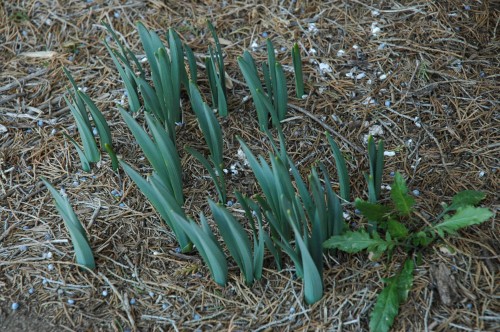
Daffodils are a sure sign of spring!
Every year that we have been blogging, I get to a time in early February when I begin searching for signs of spring. Most of this searching goes on close to the ground because the blustery winter wind does not feel like spring. But even with the frigid temperatures, I know some plants have begun to get ready for a break in the weather.
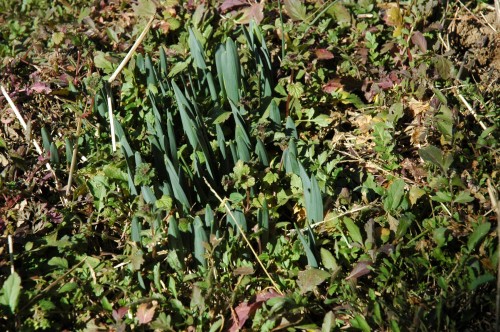
Spring has sprung on the farm!
The most reliable harbingers are the bulbs. Crocus and snowdrops are usually the first spring growth sighted, followed by the early varieties of daffodils. But this year was a little different, and it was a clump of honeysuckle that showed me the first plant growth of spring. After a more thorough investigation, I went looking around the farm and sure enough; bulbs had emerged from the ground! I am not refuting anything the groundhog said, because we do have weeks of cold weather ahead (in spite of the sixty degree weather we’re having this week in central Virginia). But the difference now is that we know spring has begun and it is only a matter of time before the ground thaws and that first warm breeze sweeps through your garden!
by Briscoe White | Feb 11, 2011 | Containers, Gardening, Growing, Herbs, Indoor Gardening, Life on the Farm, Miscellaneous, Urban Gardening |
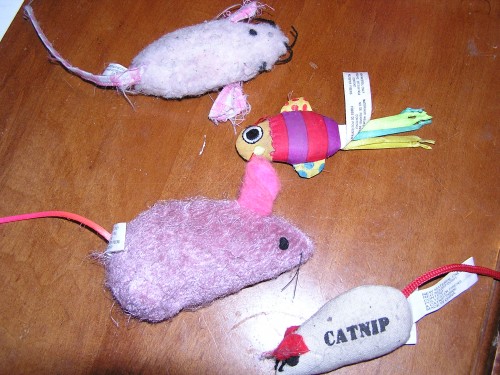
Tons of cat toys are packed with Catnip to perk your cat's interest!
Looking for a great all natural way to treat your favorite feline? Try Catnip! Often found packed into the plush insides of a cute little toy or sold in dried form at local pet stores, catnip makes most cats pretty crazy. Over eighty percent of cats are affected by the chemical component Nepetalactone, which is found in the essential oils of this perennial herb. A combination of genetics and age determine whether your felines will fiend for Catnip, as studies show that kittens don’t seem to respond until around the age of three months. Though not explored extensively, there are many cases of dogs and even some bears who find the scent of “nip” irresistible. Reactions range from sleeping and drooling, to frantically pouncing and running around, and cats seem to also experience heightened tactile sensations which may include being rubbed on their face, petted or brushed to excess.
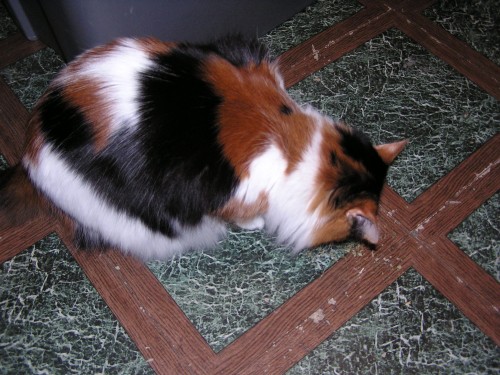
Our Media Director's cat, Sophie, eating dried Catnip. She likes the fresh stuff better!
Also known as an excellent natural insect repellent, the essential oils are often found in many DEET-free bug sprays. If making your own concoction to deter pests, try using Lemon Catnip for a fragrant citrus aroma. Catnip also has a history as a medicinal herb for its sedative properties and makes a soothing tea to help you relax, much like Valerian, an herb known to mellow you out and known commonly as “the poor man’s Valium”. Slightly numbing, Catnip is also reputed to strengthen immunities to fend off colds, fevers and the flu, and also calms an upset stomach. Growing fresh Catnip for your kitties isn’t just fun and games. The vitamins and nutrients they get from eating the raw plant is great for their bodies, and the plant itself can help cause any indigestion which may result from some store-bought foods.
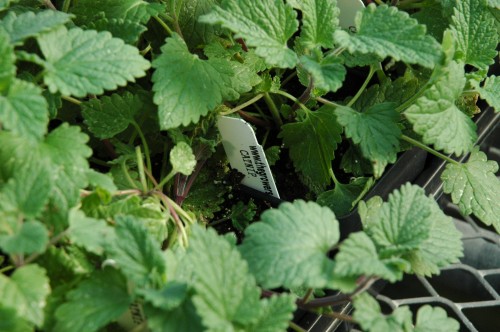
Our Catnip is all natural and because we don't use harsh chemicals, it's purrrrrfectly healthy for your cat!
If you plan to grow Catnip for your cats indoors, you may want to plant two pots, one to keep out of their reach outdoors, and one for them to enjoy inside, but make sure to swap them occasionally so they don’t completely attack the indoor pot! If you’re growing it outdoors, be aware that neighborhood cats may be flocking to your garden. To prevent their frantic frolicking from interfering with other, more tender plants that may be growing nearby, either plant your catnip in a well-drained, separate area of its own, or build a fence around your garden. (If you have problems with container-planted Catnip, try placing it in a large, metal bird cage or dog kennel, where the kitties can’t plow through it all and destroy your plant.) If you want to really encourage your cats to love you more, try planting Catmint, Lemon Catnip and Valerian in your garden. All three of these great herbs are kitty-friendly, human-friendly and make a really calming tea. Treat your cats the natural way and grow them a garden full of treats!
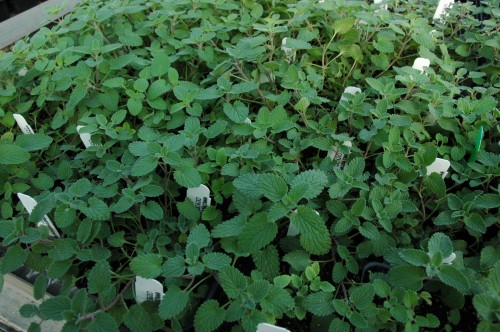
Catmint is another great herb to get your felines frisky!
by Briscoe White | Jan 21, 2011 | Life on the Farm, Miscellaneous, Wildlife |
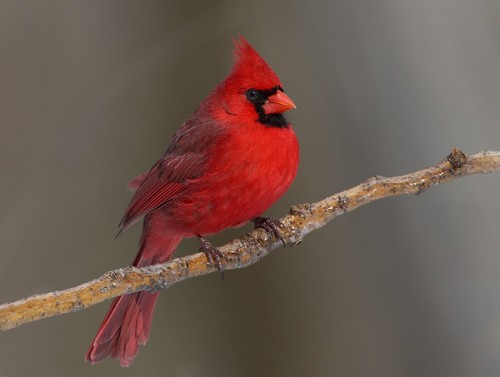
Though beautiful, cardinals can be extremely vain!
Recently, at the end the day, I noticed a departing greenhouse worker remove a plastic nursery pot from each rear view mirror and stow them in his tool box. Old memories awakened as I asked him what was up with his mirrors. “That damn bird!” was his answer, and I knew a red bird had found his truck.
For as long as our greenhouses have been here, people working there have parked outside. And just as long, cardinals have found themselves irresistible in our rear view mirrors. Or maybe they see a rival that s equally matched? Whatever they see, it causes them to stay a long time and return frequently. And while they are looking deeply into the mirror, they are also digesting and leaving their droppings in large quantities. The mess is even worse when car windows are left down, then the inside is fouled too.

To keep our vehicles clean, we have to hide our mirrors from narcissistic birds!
Over the years, employees have tried various methods for stopping the cardinals from soiling their cars. Socks, hats, and various other items have been selected. But the best I have seen yet is an old nursery pot. We do try and cooperate with nature, but do not feel we need to share our vehicles with the birds.
by Briscoe White | Dec 29, 2010 | Gardening, Inspiration, Life on the Farm |
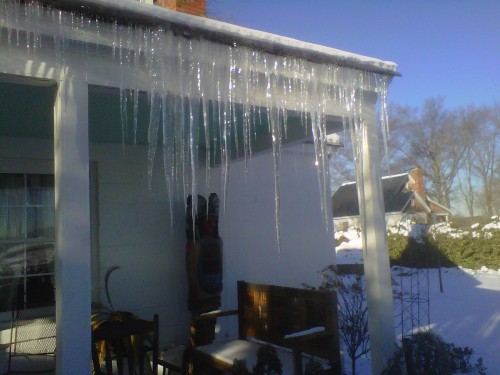
Well, though it’s too cold to ship most plants for us here at The Growers Exchange, we’re still hard at work sowing and growing for the spring season. Neither wind nor rain nor sleet nor snow have kept us away (someone has to be here to stoke the wood stove that heats the greenhouse!), but it sure makes it worth while to see such wintry natural beauty! When we braved the roads to get to the office after a recent heavy snowstorm, we were greeted with a row of glistening icicles hanging like a frozen curtain from our porch roof.
The recent frigid temperatures have made it hard on any plants left out to fend for themselves, so how can you protect them when the forecast is calling for snow? Cold frames, hoop tunnels and extra mulching are great ways to protect your plants during the cold months. We use cold frames and tunnels to keep the frost from killing herbs like Rue, which we grow in one of our fields for medicinal, culinary and cultural usage. Many supplies needed to build these season-extending protectors, like old lumber or discarded window frames with the panes still intact, can be found laying around your garage or barn. Otherwise the necessary resources can be bought fairly inexpensively at your local hardware store.
Other easy cold thwarting tricks are to plant large, shrubby evergreens or a tough perennial like Rosemary ‘Hardy Hill’, around your garden to protect smaller, more vulnerable plants from icy winds. Positioning your gardens along a south facing wall of your home will also ensure that it gets lots of warmth from the sun as well as heat escaping from your home. For more information on building cold frames or hoop tunnels, check out some of the educational videos listed on YouTube.com, like this one that we found from gardenfork.tv:
How to Build a Cold Frame
by Briscoe White | Dec 17, 2010 | Life on the Farm, Wildlife |
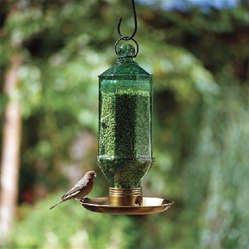
A Bird Buffet!
If your area is experiencing the extreme cold we here in Virginia have, you have probably not thought much about working in the garden. My yard is frozen solid so there is not much that could be done, even if one could stand the frigid temperatures.
Though working soil and plants is a long way off, there is one garden chore we can still do. Feed the birds. Birds don’t just make for an amusing source of natural entertainment, they’re also vital to your garden. Birds help keep your garden pest free while also spreading necessary pollen from plant to plant to aide in plant fertilization. Without these valuable winged friends, we’d be lost, so if you take care of them, they’ll take care of you (and your garden)!
Like many gardeners, I keep several bird feeders in the yard. During cold snaps like this one, the birds need all the help they can get, and respond quickly to any food offered to them. They empty my feeders quickly and sometimes eat it all before they can be refilled. When I go out to refill them, I hear birds chirping and singing as if they know what I am doing. And they do know because the feeders are occupied by the time I am back indoors. Other birds hear the commotion and pretty soon the trees around the feeders are full of birds trying to get to the feeders.
You can also spread seed or place fruit like apples and pears along your porch rails or strung together with a needle and thread and tied to a tree branch, for an added variety of food to attract different types of birds this winter! Try recording how many new varieties you come across and keep a bird journal of their favorite foods, habits, and personalities.
Try adding nesting boxes or bird houses around your yard to encourage your feathered friends to stay longer! Purple Martins, Gold Finches and Bluebirds, to name a few, are very appreciative of a safe, dry place to nest. You can even grow your own! Try growing gourds this year and let them dry. Cut a hole for an opening and hang it for a natural bird abode. Keep your houses and nesting boxes out of the reach of children and pets and do not disturb them for happier house guests.
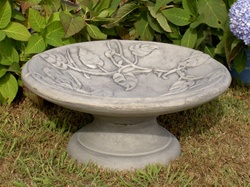
Birdbaths are good for more than bathing!
Even if it’s freezing out, birds also still need a clean water source. Try using one of our birdbaths this winter. You may have to break a little ice each morning to add fresh water, but we promise the birds will thank you. Place your feeders and birdbaths near your porch or window and enjoy the natural entertainment all year long!
Birds are an important part of my yard and garden, they bring action, color, and life. So do not forget them in these tough times and take time to feed the birds!
For more tips on feeding birds through the winter, check our article on caring for birds during the winter.
by Briscoe White | Dec 13, 2010 | Basics, Herbs, Life on the Farm |
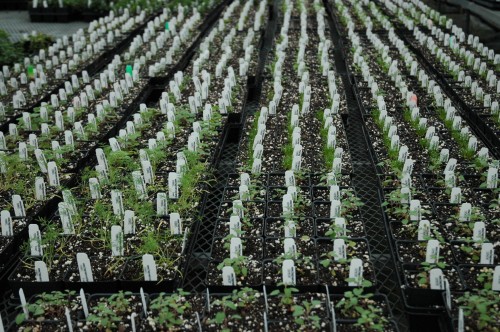
Our seedlings are growing strong!
Though the weather outside is frightful, spring planting can be delightful! Sounds strange, but that is what we are doing here at The Growers Exchange. Seeds were planted several weeks ago and many are now ready to transplant into their final pots. Some plants take a long time to grow from seed, so we start early to insure large well-rooted plants for planting out this coming spring.
Eucalyptus Silver Drop, Feverfew, Comfrey, and others require several months to gain the size and maturity they will need to grow even larger next summer. So, even though it does not feel like spring, we are busy getting ready for when it really does arrive.
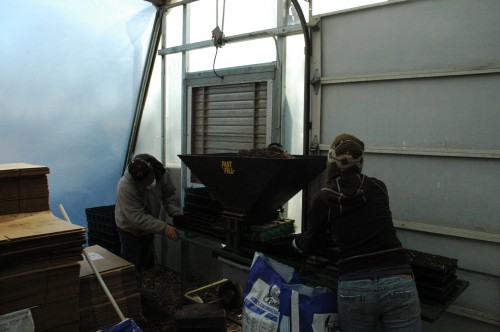
Ino and Annie filling flats!
A good indication of today’s weather is how the greenhouse staff is dressed while filling flats. I hope we don’t need that much clothing much longer!













